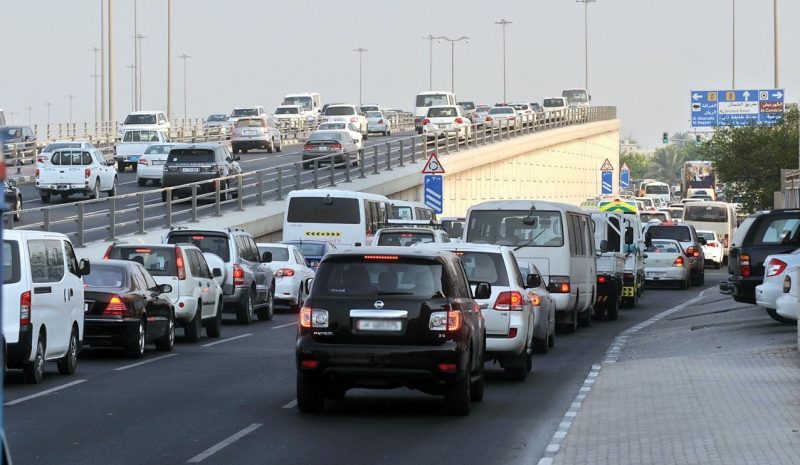In comparison to the rest of the world, Qatar appears to be ahead in reducing its road accident fatalities.
Road accidents represent the eighth leading cause of death globally. Every 24 seconds a person is killed on the road somewhere around the world.
In 2020, the United Nations adopted resolution 74/299 on Improving Global Road Safety due to the critical need of protecting people on the road. The resolution set a target of reducing road deaths and injuries by 50% by 2030.
According to the World Health Organisation (WHO), road accidents claim the lives of up to 1.3 million people around the world, necessitating urgent action before more losses are recorded.
Road traffic injuries are also the leading cause of death amongst children and young adults between the age of five and 29.
Locally, traffic accidents are the main cause of premature deaths in the country, as stated on the website of Qatar’s Ministry of Public Health (MoPH).
Responding to a poll that Doha News shared on Instagram, 42% of participants said that they have been in a car accident in Qatar, whilst 13% said that they have lost a loved one as a result of a road accident.
In comparison to the rest of the world, Qatar appears to be ahead in reducing its road accident fatalities, a fact that 63% of the poll participants did not know.
Data collected by the World Bank found that local deaths caused by road accidents dropped significantly between 2000 and 2019. The average deaths reported per 100,000 of the population was 31.2 in 2000, decreasing to 7.3 in 2019.
The reduction in the mortalities came as Qatar’s population was growing. The country’s population was 592,467 in 2000 and reached 2,826,286 in 2022.
Between 2011 and 2020, the country witnessed a 61% drop in traffic related fatalities. Local data also found that there were four deaths recorded per 100,000 of the population in 2020 in comparison to 11.3 in 2010.
Recent data released by Qatar’s Planning and Statistics Authority (PSA) found that road accident deaths in December 2021 fell by 47.6% in comparison to the same period in 2020.
It is noteworthy that the country had imposed strict Covid-19 restrictions in 2020, the very beginning of the pandemic, which forced people to stay at home for months. The lockdown could have played a role in the decrease as well as 2021, when the population worked from home during the second wave.
Figures released by Qatari news outlet Al Sharq, citing an official from the traffic department, showed that the country’s death rate due to road accidents per 100,000 people is the lowest when compared to the rest of the world.
Africa’s average was 26.6, Eastern Europe and Asia Minor averaged 18, Europe reported 9.3, South Asia 20.7 and 15.6 in the Americas.
Road safety measures
Factors that have been attributed to the Gulf state’s success in drastically reducing road accident fatalities is the Qatar National Road Safety Strategy 2013-2022.
The strategy aimed to reduce car accident fatalities from 13 deaths per 100,000 people to six by 2022. Qatar had achieved this goal five years in advance, with plans to achieve an additional 25% in 2022 in time for the World Cup.
Qatar has also been leading initiatives to raise awareness on road safety, including the establishment of the National Traffic Safety Committee in 2012. The protection of children in vehicles has also been at the heart of preventative programmes.
One key initiative is the Qatar National Child Passenger Safety Program, ‘Ghalai’. The programme guides parents and caregivers on ways to protect children from possible car crashes.
According to the WHO, children in vehicles make up 50% of all child road-traffic deaths in high-income countries.
Whilst road deaths caused by road accidents in Qatar have dropped, accidents increased by 33.2% December 2021 in comparison to the previous year.
According to the Qatari government portal, Hukoomi, the annual increase of traffic accidents in Qatar is 13%, which means that the figure could double by the end of 2022.
The increased registration of vehicles as the population grows is a possible cause for the rise in car accidents.
In November last year, Qatar’s private vehicle registrations witnessed a 29.9% increase in comparison to the same period the previous year.
The total number of new vehicles stood at 6,882 during the same month, which is a 35.8% increase in comparison with the same period in 2020.
Responding to a question over the reason behind road accidents, 49% of Doha News’ poll participants said that reckless driving has been a leading cause in the incidents. Meanwhile, 19% believe speeding is the cause, 17% answered with tailgating and 15% responded with “not using indicators”.
Whilst 53% of participants believe that roads are safe in Qatar, 52% responded with “no” to the question on whether or not there are enough measures to prevent road accidents.
One participant noted that better roads are required to prevent such incidents from occurring, which was also echoed by other members of Doha News’ audience.
Another participant believed that the removal of speed radars in construction work, which has been taking place in various parts of the country, could be a possible cause behind road accidents.
Traffic violations rose by 12.8% in December 2021 in comparison to the same period in 2020. During the same month last year, 196,185 traffic violations were recorded.
More than 140,165 vehicles were caught exceeding the roads’ speed limits, in which 18,866 violated traffic signs and 6,105 involved jumping a red light.
Several members of Qatar’s community have called for stricter penalties on those who violate traffic laws and more restrictions when it comes to obtaining a driver’s license.
To further contain reckless actions that lead to traffic accidents, Qatari authorities installed radars that are able to catch drivers using their phones on the road.
With the significant drops in road accident deaths and the measures Qatar has been implementing to promote road safety, the Gulf state’s roads appear to be safer than other parts of the world.
However, some residents and citizens in Qatar encourage more measures to be implemented to further achieve road safety.







